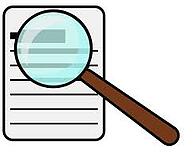I don't always try to prevent loss. But when I do, I do it manually.

Loss prevention within the restaurant industry is a hot topic right now. There’s something awkward and unsettling about it, too. Operators want to act like they have it under control and financial executives are hesitant to disclose that loss is actually occurring. Why? My theory is that they don’t want to appear vulnerable. I heard a story a few weeks ago where an employee had stolen over $5,000 and it flew under the radar for about three months until a District Manager finally realized something wasn’t adding up on the P&L. There isn’t an end to that story yet as it is still being settled in court. Which brings me to my point: there’s a manual and automated methodology to preventing loss. (Although I would go as far as saying that preventing is not the appropriate choice of words … restaurants are always at risk of being stolen from – so the only sure fire way to prevent loss would be to hire an auditor to be at each location everyday. Who can afford that, anyway?)
We’ve talked a lot about loss prevention over the past couple months – here, here and here. The combination of my boss and our clients saying it’s top of mind right now provoke me to place a high level of importance on educating people about the topic. I mentioned a manual and automated methodology to loss prevention; the most successful companies integrate the two. Here are 5 ways you can be proactive about preventing loss, right now.

2. Set up a notification process when loss is discovered
This of course depends on who first discovers the issue. But something you want to avoid is informing the wrong person first. (Unless of course we’re talking about a major loss – in which case, go immediately to the top) You want to be careful about the quantity of notifications sent out - too many and the team will eventually tune them out. You want notifications to go out for the biggest events; not necessarily every event. Research suggests that restaurant companies will lose 3% of gross sales to theft a year. That equates to $2,500 per month in gross sales for a single unit doing $1 million a year. You’re margins are all ready razor thin – imagine if you could prevent loss and add 3% back to the bottom line...
Point being, above store leaders will be the ones keeping an eye on loss. When a loss event occurs, work your way to the bottom rather than the top. Have the District Manager set up a time to meet with the General Manager of the location to go over what happened and put a plan in place to proactively manage the situation and help to avoid it from happening again.
3. Maintain a record of events on a per area, per store and per employee basis
This will help in discovering trends. Create an Excel workbook to dedicate to loss prevention and as each event occurs, document everything. Remember in the first paragraph when I talked about the $5,000 loss event that is still being worked out in court? Having evidence to support your case will only help you if a situation gets out of control. As you continue to document and maintain your workbook, not only will you have context to back every loss event, you can create a pivot table to analyze with the hope of preventing loss in the future by eliminating the causal factors.
4. What percentage of sales is discounted products?
Times are hard and the majority of your employees make minimum wage – if you don’t think they are applying discounts on items that they are buying for themselves, think again. You have a plethora of promo and discount codes on the POS system. If you want to avoid heavy discounting, run a daily report to observe and analyze how much and how often food and beverages are being discounted. Set a threshold on how much will be tolerated and put a process in place that provides documentation for the big discounts that occur.
5. Trust but verify
Your General Managers are vitally important to the success of your restaurant company. When speaking to them about a loss prevention issue at their store, trust them. But, cover your bases and verify that the information he/she is telling you is accurate. Sometimes they might be the reason for the loss event. In which case, you might need to start doing some recruiting to replace.
Now what?
You’re probably sitting there asking yourself – “ok, what part of this is actually automated?” Great question. The majority (if not all) of these tactics are the manual side of preventing loss. If you noticed, nothing I suggested requires any out of pocket cost either. It’s simply a matter of spending more time, paying closer attention, and putting a process in place to help manage loss. If you want to learn about an automated approach to loss prevention, I advise clicking the button below.








.png?width=50&height=50&name=Mirus%20Logo%20(1).png)